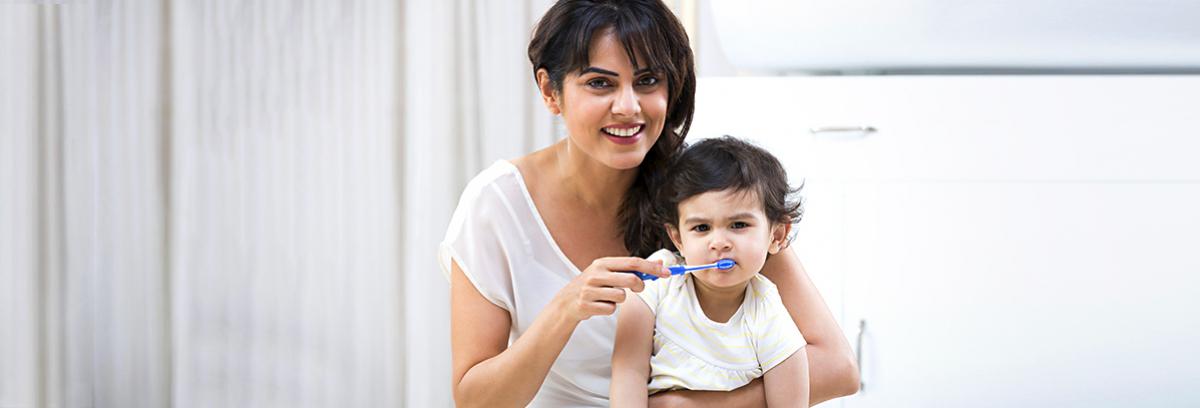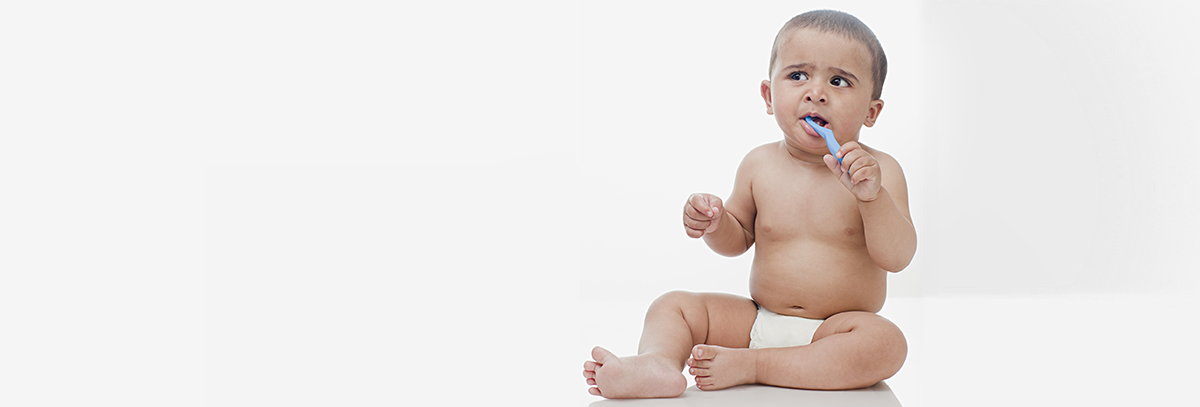
DENTAL CARE - TEETHING
January 12, 2021
|
5 min
A baby’s milk teeth usually come through between 6 and 30 months of age. Teething is blamed for many childhood symptoms. These are often minor illnesses that happen to occur at the same time as teething. Signs of serious illness such as high fever, vomiting and convulsions should not be attributed to teething and your baby needs to be checked out by your family doctor.
WHEN AND IN WHAT ORDER DO TEETH COME THROUGH?
The first tooth generally appears at around 6 months—sometimes a little earlier or a little later. There is, in fact, no definite date, or even an exact order for the growth of the first teeth! The ages below are only given as examples:
* Four central incisors between 6 and 8 months.
* Four central incisors between 6 and 8 months.
* Four lateral incisors between 6 and 12 months.
* Four first premolars between 10 and 18 months.
* Four canines between six and 24 months.
* Four second premolars between 20 and 30 months.
How will my baby react?
Erupting teeth may be painful but sometimes they appear with no prior warning. Your baby’s gums may swell a little, they may have more saliva than usual and put their fists or toys in their mouth. How can I protect my baby’s first teeth? Firstly, look after your own teeth as infants pick up bugs from other people’s saliva, usually their parents. If you have dental problems you will have a large number of bugs in your mouth. So, looking after your own teeth and gums can reduce the risk of passing these on to your child.
* Around eight months, start to teach your infant to drink from a cup.
* Children should not fall asleep or sleep in bed with a bottle.
* Establish regular breast or bottle feeds. Extra fluid is not needed until your baby is eating solids. Offer water as a drink between feeds once your baby is eating solids.
* Breastfeeding constantly at night should be avoided after the first primary (baby) teeth begin to erupt.
* If juice is offered, give it in a cup, not a bottle.

AT WHAT AGE SHOULD TEETH BRUSHING BEGIN?
You can start tooth cleaning as soon as teeth appear. Wipe them with a soft, moist cloth. A small smear of low fluoride toothpaste can be used. Around 1 year of age, you can change to a small, soft toothbrush. To make learning easier for your baby, here are a few tips: Have them use a small brightly-coloured toothbrush, as this is more fun. You will need to brush your child’s teeth until about 5 years of age, so make it part of their daily routine. Show them the correct movements, brushing a good while in a circular motion, both front and back. It is best made into a game while you yourself are brushing your teeth.